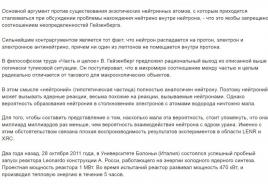Analysis of 15 exam assignments in Russian. Theory "Spelling -Н- and -НН- in different parts of speech"
Quest Source: Decision 2450. USE 2018. Russian language. I.P. Tsybulko. 36 options.
Task 15. Arrange punctuation marks. Indicate two sentences in which you need to put ONE comma. Write down the numbers of these sentences.
1) The sparkling waves laughed mysteriously and ran ashore and crashed loudly against the stones.
2) Be silent, hide and secret and your feelings and dreams.
3) The whirlwind raged for about an hour or an hour and a half and then suddenly died down.
4) Children's memory turned out to be tenacious and the first meeting with the theater remained in her forever.
5) In his work M. Voloshin tried not only to comprehend the past of Russia, but also to predict its future.
Decision.
In this task, you need to put commas in a complex sentence or with homogeneous sentences.
1. Let's determine the number of grammatical bases in these sentences: a simple sentence or a complex one.
1) Sparkling waves mysteriously laughed and ran to the shore and loudly crashed about stones. Simple.
2) Shut up hide and thai and their feelings and dreams. Simple.
3) Vortex raged for about an hour or an hour and a half and then unexpectedly verse... Simple.
4) Children's memory was tenacious and the first a meeting with theater stayed in it forever. Difficult.
5) In your work M. Voloshin tried to Not only comprehend the past of Russia but also foresee her future. Simple.
2. Let's define the setting of commas in a complex sentence. Rule: comma on border of parts complex sentence is placed in case simple sentences do not have a common secondary term.
4) Children's memory turned out to be tenacious (,) and the first a meeting with theater stayed in it forever. Complicated, there is no common minor member, a comma is needed. ONE comma.
3. Let's define the setting of commas in simple sentences. Rule: one comma is placed before the second homogeneous member in the absence of unions, before a single adversary union or before the second part of a complex union (like ... and so on).
1) The sparkling waves laughed mysteriously and ran ashore and crashed loudly against the stones. Homogeneous predicates are connected by a repeating conjunction "and" (laughed, and ran, and crashed). TWO commas.
2) Be silent (,) hide and secret and feelings (,) and your dreams. Homogeneous predicates are connected by the conjunction "and" (be silent, hide and tai). Homogeneous additions are connected by a repeating union of "and" (both feelings and dreams). TWO commas.
3) The whirlwind raged for about an hour or an hour and a half and then suddenly died down. Homogeneous predicates are connected by the conjunction "and" (the verse was also raging). There are NO commas.
suggestions




